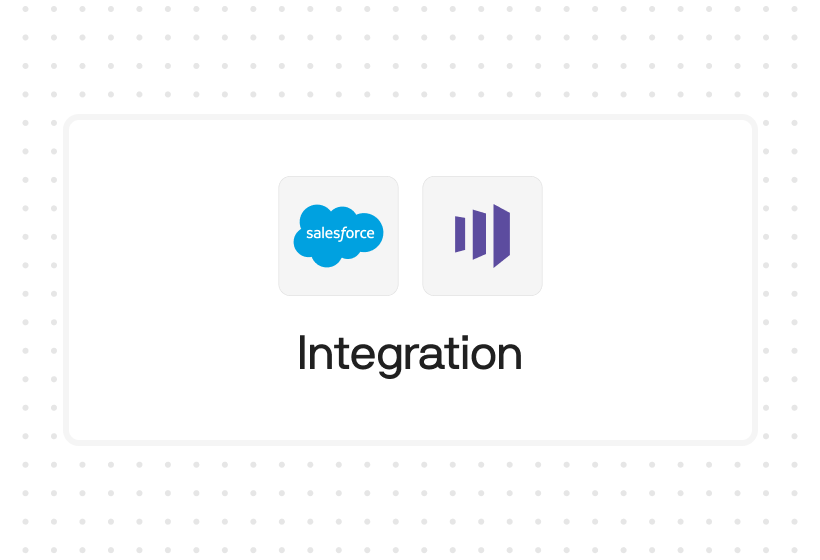Try Default

See how revenue teams automate revenue operations with Default.

Key Takeaways
The difference between sales operations vs. revenue operations vs. marketing operations may seem semantic. But these three ops management approaches are very different. Understanding those differences will help you build your workflows, automations, analytics, etc. in a way that maximizes the individual and collective value of each.
This article will break down these differences, giving you a clearer picture of how they function and how to best support them as you grow your organization.
What are sales operations vs. marketing operations vs. revenue operations?
It probably comes as no surprise that most organizations are undisciplined when it comes to internal terminology. Many GTM leaders will talk about revenue operations, when in reality they’re referring to sales ops—simply because, in their mind “revenue” and “sales” are one in the same.
So before we dive deeper, let’s pause and break down the differences among sales operations vs. marketing operations vs. revenue operations.
Sales operations (Sales Ops)
Sales ops equips sales reps and managers with systems, processes, technology, and other resources needed to reach quota. All other goals—efficiency, productivity, employee experience, predictability, etc.—are secondary to that one. Unless sales ops make quota happen faster, you don’t get buy-in from salespeople. After all, they’re just trying to make it to the next deal.
Sales operations, then includes a range of functions, including:
- Territory planning
- Sales forecasting
- Operational tasks
- Sales technology implementation & management (e.g. top sales scheduling software or modern sales workflow tools)
- Sales data management
- New user onboarding
- Commission and incentive oversight
Marketing operations (MOps)
Marketing operations works in much the same way, only—you guessed it—overseeing the marketing organization. Because marketing goals are often multi-faceted and more complex than sales, the precise goals of marketing ops vary by organization. Ultimately, the goal is to drive greater awareness of the company, increase inbound leads, and improve your brand reputation.
Marketing operations also has a broad scope, including:
- Managing a diverse team of people, from data specialists to technologists to creatives to strategists and more
- Set processes for creating, organizing, launching, and measuring campaigns
- Select, purchase, implement, and manage the marketing tech stack (e.g. marketing automation software)
- Capture and analyze data to measure and improve performance
It’s not uncommon for marketing operations to coordinate cross-functional campaigns and initiatives with other departments—sales, IT, success, etc. This is namely because marketing touches so many parts of the organization, that clear, open communication is necessary for success.
See our guide on the differences between a marketing qualified lead vs sales qualified lead and the best inbound marketing software.
Revenue operations (RevOps)
Then there’s revenue operations (RevOps). Rather than a function that’s distinct from marketing, sales, and success, RevOps is a methodology and brings all three together. By aligning all revenue teams against common goals, RevOps aims to reduce inefficiencies in the customer lifecycle stages and identify the true impact of each function on the bottom line.
RevOps is built on four primary pillars:
- People: cross-functional employees and teams
- Process: defined KPIs, metrics, goals and workflows based on proven successes
- Technology: RevOps software and unified RevOps tech stacks for collaborative work and single source of truth
- Data: decisions made based on facts, not opinions
The fundamental assumption of RevOps is that marketing, sales, and success don’t operate within their own silos. By connecting these functions, a solid RevOps strategy ensures not only a common foundation upon which they all operate, but also a seamless experience for the prospect and customer—by providing personalization at scale.
According to Stephen Diorio, Director of the Revenue Enablement Institute and Forbes contributor, “At the highest level…[RevOps is] important because growing a business…is a digital, data-driven, and technology enabled team sport. B2B growth leaders are driving a machine that uses customer data as gasoline, selling content as oxygen, and digital technology to get traction with customers. The assets that support this growth machine – customer data, digital selling infrastructure, and brands – are the largest financial assets on the company balance sheet.”
READ MORE: Stephen Diorio’s quintessential intro to RevOps and 8 other RevOps book recommendations.
Sales operations vs. revenue operations
Now that we’ve defined each of the three ops functions above, let’s dive deeper into how they differ, starting with sales operations vs. revenue operations. While both functions lean heavily on technology and data to align functions, there are some key differences between the two.
Function & department
The most obvious difference between the two is that RevOps serves the broader revenue organization—marketing, sales, success—while sales ops focuses only on the sales team. Since sales ops has a narrower focus, likely its goals can come into conflict with RevOps’ broader priorities. These two teams may also have different stakeholders, which will naturally influence how they operate.
Customer engagement
RevOps engages customers across the entire revenue cycle, so the tactics deployed will vary—top of funnel vs. bottom of funnel vs. post-sale, for instance. Sales ops focuses primarily on the relationship between reps and customers during the active buying process, although when needed they’ll pull in data from earlier in the funnel.
Approach to revenue
Sales ops is singularly focused on building new revenue streams—i.e. closing new customers. While some reps may be pulled in to help with up-sells and cross-sells, most of their effort will be on building new pipeline. RevOps, on the other hand, looks at revenue more broadly, and is interested in empowering new business, retaining and expanding current business, and softening the market to make lead acquisition that much easier. This broader outlook is driven by effective RevOps strategies that align efforts to maximize revenue impact at every stage of the customer journey.
Data & KPIs
Sales ops focuses primarily on close rates, sales velocity, pipeline value, etc. RevOps KPIs are a bit broader in focus, and deal with cross-functional metrics. RevOps metrics also are a bit more strategic and dynamic in nature. For example, a RevOps team member may look at customer acquisition cost (CAC) in relation to lifetime value (LTV), knowing that a higher CAC may be justified if you’re landing a customer with a higher LTV.
Marketing operations vs. revenue operations
In a similar vein, marketing ops and RevOps are similar but different. Like the sales operations vs. revenue operations comparison, it comes down to a narrow vs. broad focus. Let’s look at those same four areas.
Function, department, and goals
Marketing ops sits solidly within the marketing department, emphasizing efficiency and standardization throughout the whole marketing funnel. In this way, marketing ops is a subset of RevOps.
Cross-functionality
Marketing requires a more diverse skill set than sales—creatives, project managers, data managers, strategists, etc.—so cross-functionality comes more naturally to marketing ops. However, marketing teams often keep this collaboration within their own borders. RevOps expands this idea of cross-functionality. Specifically, by connecting marketing outcomes with sales outcomes explicitly, RevOps is able to give a more accurate picture of ROI.
Approach to revenue
While marketing ops focuses on audience growth, lead generation, and brand awareness, RevOps looks more holistically at how this translates to sales.
Data and KPIs
Marketing ops is singularly focused on measuring the metrics associated with lead generation, engagement, and brand growth, as well as internal metrics regarding the efficiency of marketing team performance and resource use. RevOps then takes these metrics and ties them more explicitly to revenue—either in terms of new sales, retained customers, or cross-sells and up-sells. Some of these metrics include recurring revenue, churn, customer satisfaction, net new revenue, and gross profit.
Which function do you need?
If you’re asking this question, you should re-read this article: because marketing and sales ops are both critical to your business growth and contained within RevOps itself. You need all three.
Keep this in mind when building your tech stack. Sales operations vs. revenue operations vs. marketing operations requires its own unique technology. Whether it's sales scheduling software, lead routing software or full sales workflow software.
Unless you have a way of orchestrating them, you’ll create broken experiences—which defeats part of the purpose of RevOps in the first place.
Default brings all of these functionalities seamlessly under one roof.
Learn more about Default’s RevOps orchestration & automation platform here.
Conclusion

Former pro Olympic athlete turned growth marketer. Previously worked at Chili Piper and co-founded my own company before joining Default two years ago.
Accelerate your growth with Default.
Revamp inbound with easier routing, actionable intent, and faster scheduling














.png)

























